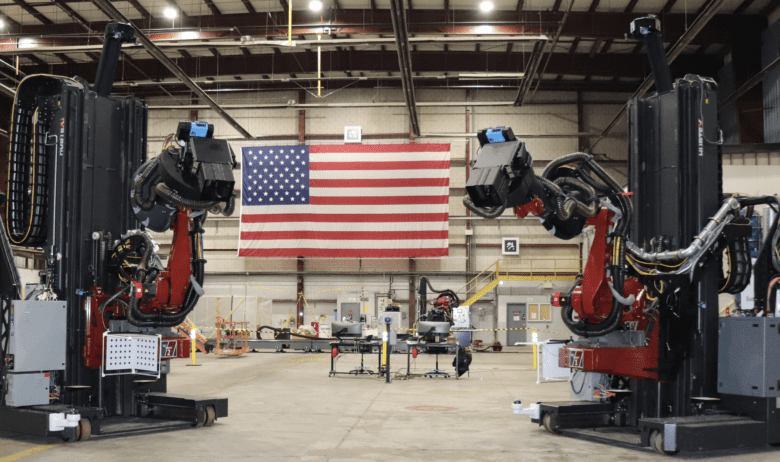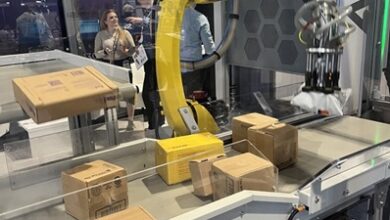Robotics Firm Selects Airport HQ Site

A Pittsburgh robotics company whose technology strips paint from jets is relocating to an office park near Pittsburgh International Airport, the latest tech company to expand in the region.
Titan Robotics, company officials say, has outgrown its current office space on Pittsburgh’s South Side. The move also puts the company closer to a hangar at the airport where it has done testing for five years.
“We needed more space,” said Thad Magyar, Titan’s chief financial officer. “One advantage of the move that it brings all members of our team closer together.”
Tech Hub
The company’s decision to stay in Pittsburgh also reflects the region’s growing status as a tech hub.
“Our goal is to do our part to promote the economic viability of the region. The company is staying in the region and getting the space it needs for research and development,” said David Storer, director of commercial development for the Allegheny County Airport Authority.
Titian Robotics’ new headquarters will put the company closer to a hangar at the airport where it has done testing since 2019. (Courtesy of Titan Robotics)
Like many tech companies, Titan, founded in 2014, grew out of the storied robotics program at Carnegie Mellon University. The company has about 60 employees and has attracted some employees from other parts of the country.
“There’s a good tech ecosystem here with CMU, Pitt and Penn State. Pittsburgh has big-city sports and culture and a small-town feel, and a good cost of living,” Magyar said of the region.
Titan’s biggest contracts have been with the military. But the company’s clients are diversifying. Titan is now in contract negotiations with one commercial airline and in talks with another.
Streamlined and cleaner process
Titan’s robots use lasers to remove paint from jets – a more efficient and clean method. In the past, removing old paint was a time-intensive process similar to sandblasting that produces about a ton of hazardous waste per jet, including hexavalent chromium, a carcinogen.
The company’s knowledge and experience led to a contract with the U.S. Air Force, which spends billions repainting F-16 fighter jets.
CMU Roots
Titan got its start through Carnegie Mellon University’s National Robotics Engineering Center.
While at CMU, the group received Air Force funding to develop the laser system to remove paint from the surface of an aircraft, a process that takes place during heavy maintenance checks, which occur once every few years. (Multiple layers of paint become too heavy for safe flight.)
The system was eventually vetted by the Air Force and approved for use after extensive testing at Hill Air Force Base in Utah, with Warner Robins Air Force Base in Georgia contracting with Titan in 2018.
Two robots use 6-kilowatt continuous-wave lasers to strip the paint off. When the laser hits the paint, it bursts into flame. “You’ll see a bright flash of light,” Rik Crowther, a senior engineer at Hill Air Force Base in Utah, told Popular Science. “We’re actually pulling the flame off the surface of the aircraft.”



